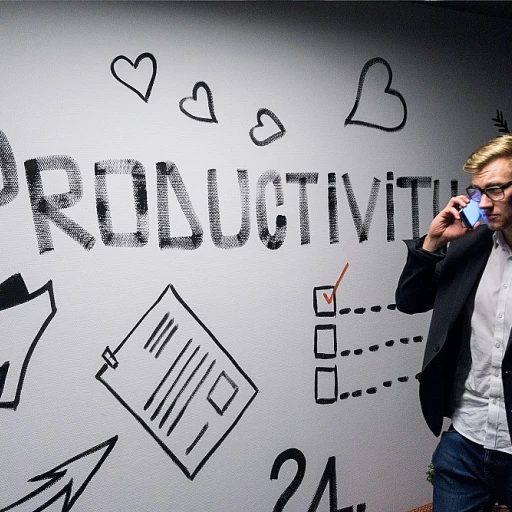
Defining DEI and MEI
Clarifying DEI and MEI in Human Resources
Diversity, Equity, and Inclusion (DEI) and Merit, Excellence, and Intelligence (MEI) are pivotal concepts in the evolving landscape of human resources. Each plays a crucial role in shaping the workplace culture and performance of organizations worldwide.
Understanding DEI: DEI focuses on creating a workplace where diversity is celebrated, and everyone, irrespective of race, gender, or background, has equitable opportunities. This includes diversity in hiring practices, promoting equity in the workplace, and fostering an environment of inclusion where every employee feels valued and recognized. Organizations with strong DEI initiatives often demonstrate enhanced employer branding, improved talent attraction, and higher employee engagement rates.
Navigating MEI: On the other hand, MEI emphasizes a merit-based approach to human resources and hiring processes. It prioritizes excellence and intelligence, encouraging organizations to focus on performance and skills. This approach is centered around identifying and nurturing top talent, ensuring that the most qualified individuals are rewarded for their contributions to the company’s success.
The relationship between DEI and MEI is complex, with each having unique advantages and challenges when implemented in isolation. Many companies strive to integrate these approaches into a cohesive strategy that promotes both diversity equity inclusion and merit diversity. Successful integration leads to a dynamic workplace where both diversity equity and merit excellence contribute to organizational success.
To explore more about how to align these practices with company policies and user agreements, understanding severance negotiation strategies can be insightful in optimizing human resources management.
The Role of DEI in Modern Workplaces
The Importance of DEI in Today's Work Environment
In the modern workplace, Diversity, Equity, and Inclusion (DEI) initiatives have become essential components for fostering a healthy and productive environment. Companies are increasingly recognizing the value of a diverse workforce, which includes people of different races, genders, and backgrounds. This diversity not only enhances creativity and innovation but also reflects the varied customer base that organizations serve.
DEI programs aim to create an inclusive workplace culture where everyone feels valued and respected. By focusing on equity, these initiatives strive to provide equal opportunities for all employees, ensuring that hiring and promotions are merit-based rather than influenced by race, gender, or other biases. This approach helps in attracting top talent and retaining employees who feel a sense of belonging and purpose within the organization.
DEI and Performance Excellence
Organizations that prioritize DEI often see improvements in performance and productivity. A diverse team brings a range of perspectives and problem-solving approaches, which can lead to better decision-making and innovation. Moreover, when employees feel included and valued, they are more likely to be engaged and committed to their work, contributing to overall organizational excellence.
However, implementing DEI initiatives is not without its challenges. Balancing DEI with merit-based systems requires careful consideration and strategic planning. Companies must ensure that their DEI efforts do not inadvertently create reverse discrimination or undermine the principle of merit excellence. This delicate balance is crucial for maintaining fairness and fostering a culture of inclusion and respect.
For more insights on navigating these challenges, you might find it helpful to explore strategies for mastering the art of severance negotiation, which can also play a role in shaping equitable workplace practices.
MEI: A New Perspective
A Fresh Approach to Workplace Culture
The evolving dynamics of workplace culture have introduced various ways to approach diversity, equity, and inclusion (DEI) initiatives. Traditionally, these initiatives have focused on demographic factors like race and gender, aiming to address inequalities in the hiring process and improve the overall organizational atmosphere. However, a growing number of companies are shifting towards a merit-based approach known as Merit Excellence Intelligence (MEI). This strategy emphasizes individual performance and skills, promoting an environment where the top talent can thrive based on excellence rather than solely filling diversity quotas.
MEI has garnered attention not just as a complement to DEI, but as a critical perspective that integrates seamlessly into existing HR frameworks. It is about finding a balance where diverse talent pools are evaluated not only by demographic categories but also by the value they bring to the table. This shift is particularly evident in organizations that prioritize optimizing long-term workplace performance and excellence.
Integrating MEI with DEI
Organizations aiming to create an inclusive workplace need to balance both DEI and MEI strategies effectively. Incorporating MEI can enhance the implementation of DEI programs by ensuring that the emphasis on diversity and equity also correlates with measurable workplace excellence. For instance, rather than focusing solely on diversity metrics, MEI leverages a merit-based approach to foster a culture where everyone, regardless of their background, can contribute to organizational success based on their unique merits.
Merit diversity doesn't negate the importance of DEI initiatives; instead, it enriches them by ensuring that the pursuit of diversity also meets high standards of performance and inclusion. By doing so, organizations can cultivate a workplace culture that doesn't just meet DEI objectives but also surpasses them in fostering an environment of true inclusion and opportunity.
If you're interested in learning more about enhancing employee engagement through innovative talent activities, explore more here.
Challenges in Balancing DEI and MEI
Striking the Right Balance
Balancing Diversity, Equity, and Inclusion (DEI) with Merit and Excellence Intelligence (MEI) in today's workplace culture poses a set of unique challenges for organizations. On one hand, DEI initiatives aim to transform workplaces into environments where diversity is not just represented but thriving. They focus on creating spaces where people from various race and gender backgrounds—including black women and other underrepresented groups—can feel included and have equitable opportunities. On the other hand, MEI emphasizes merit-based performance excellence, a model highly sought after by companies looking to consistently fill top talent needs.
Finding harmony between DEI and MEI is essential for a progressive workplace culture. Organizations often struggle with integrating both approaches without favoritism or bias. There exists a delicate line where companies must ensure their hiring practices are not only inclusive DEI merit-based but also uphold standards of performance excellence.
Despite the growing emphasis on diversity equity inclusion, many organizations face issues when these initiatives clash with traditional merit excellence intelligence systems. This balance is crucial for maintaining employer branding and attracting the best talent. The goal is to create a work culture that respects diversity initiatives while simultaneously promoting individual excellence and intelligence.
Standardizing DEI programs across various sectors while ensuring performance criteria are met can be challenging. Companies should focus on cultivating a system that equally supports diversity inclusion and merit diversity, ensuring that inclusion DEI is embedded into the organizational fabric without compromising on the principles of MEI. Such a balance can lead to long term success in achieving not just organizational goals but also social equity.
Case Studies: DEI vs MEI in Action
Illustrating Practical Applications
The integration of DEI and MEI within organizations has sparked varying strategies aimed at fostering both diversity and merit excellence. A glance at real-world instances can illuminate how companies navigate this dynamic space.
Company A: DEI Driven Success
In one example, a large tech company focused on leveraging DEI initiatives found tremendous success in creating an inclusive culture. By implementing diversity equity programs specifically targeting underrepresented groups, such as Black women in leadership roles, they achieved a 20% increase in employee satisfaction and retention rates within a year.
The company implemented strategic inclusion practices, such as comprehensive training sessions that addressed implicit biases and updated their hiring processes to be more inclusive. The tangible impact was seen not only in workplace culture but also in attracting top talent who valued employer branding tied closely to DEI.
Company B: MEI Focused Innovation
Conversely, another organization in the manufacturing sector adopted a merit-based approach to foster excellence. They emphasized a performance-driven environment where recognition was based primarily on results and innovation. By prioritizing merit intelligence, their focus was on ensuring that excellence is celebrated across all levels of the organization.
MEI strategies led them to build a robust innovation pipeline, empowering employees to excel through equitable opportunities, while still maintaining a degree of diversity and inclusion DEI elements in programs parallel to merit evaluation frameworks.
The Balancing Act
Organizations are continuously challenged to find harmony in DEI versus MEI strategies. The equilibrium between fostering a rich diversity landscape and merit-based excellence is not straightforward—as DEI seeks to level the playing field while MEI aims to celebrate merit-driven performance.
These case studies reflect that success varies and is highly context-dependent, with organizations adapting their paths to fill the diverse needs of their workforce while striving for a balance that transcends race gender challenges.












